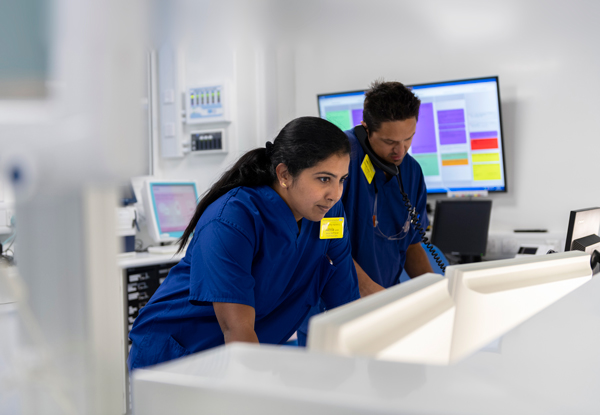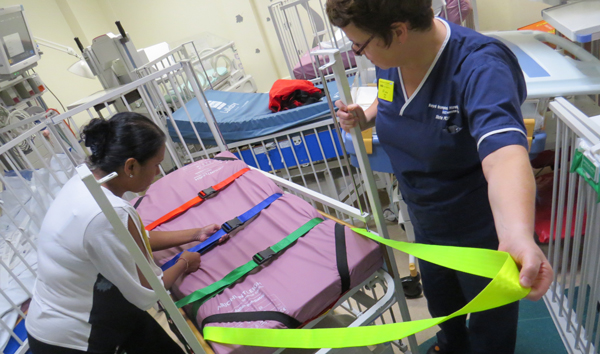 The Trust has a statutory obligation to plan and prepare for the fullest possible range of major incidents and potential business disruptions, which could affect patient care.
The Trust has a statutory obligation to plan and prepare for the fullest possible range of major incidents and potential business disruptions, which could affect patient care.
These situations could range from extreme weather conditions to an outbreak of an infectious disease or a major transport accident, so we must be in a position to respond to such incidents while maintaining services to our patients.
We continuously assess for potential risks and undertake regular testing and exercises with different groups of staff, in order to update and improve our response plans.
Special emergency drill: theft of a nuclear source
Part of our duty to our patients is to anticipate and prepare for possible future risks, no matter how unlikely.
In summer 2017, a highly unique exercise was held to see how teams at Harefield Hospital would respond to the theft of a nuclear source.
In the exercise - believed to be the first of its kind in an NHS building - a fire alarm was maliciously set off to create a distraction to enable the theft from the nuclear medicine department.
Catherine Philpott, the Trust's emergency preparedness, resilience and response manager, said: "While this was a very unusual experience, it is important that we plan for every possible scenario. I am pleased with how the team reacted and feel confident that the Trust would be able to respond effectively to a real event."
Responding to the exercise, Harefield's nuclear medicine team successfully notified the Environment Agency and police counter-terrorism security advisor. The area was cordoned off to preserve evidence and staff worked with internal security and the police to gain quick access to CCTV with a view to identifying the offenders.
Similar exercises have since taken place at Royal Brompton Hospital and the private patients' facility in Wimpole Street.
Paediatric study day improved evacuation for babies
 The paediatric intensive care (PICU) team has designed two new pieces of equipment to help evacuate babies in the event of an emergency.
The paediatric intensive care (PICU) team has designed two new pieces of equipment to help evacuate babies in the event of an emergency.
Staff devoted a full study day to examining their evacuation procedures and discovered that standard evacuation equipment was not suitable for PICU babies, who often need to be moved while still connected to ventilators and other equipment.
After doing an evacuation exercise, the team worked together to design a new 'ski sheet' for moving cot mattresses. A ski sheet is a piece of sheeting with straps attached which fits under a mattress, and in the event of an emergency can be used to evacuate bed-bound patients by sliding the mattress out of the building. The new paediatric ski sheets feature more straps for added security, and the fixings have been updated to soft plastic which is kinder to babies' skin. These new sheets have been produced are now in use on the unit.
Another piece of equipment that our experts felt could be improved is a wearable cot that sits on the front of an adult's body and enables a single member of staff to evacuate a baby. The team felt the standard model was not sturdy enough to hold PICU equipment and are working with a product designer to create a version with a more rigid and stable base.
Paediatrics matron Claire Buckle said: "The safety of our patients is always our number one priority, and of course this extends to ensuring we have the optimum evacuation procedures for getting children out of harm's way.
"It is only when you test equipment like this, that you can see any potential issues with it, so this study day has meant we could get to work on producing something much more suitable for our patients and their unique needs."
Ski sheet
Every single bed in the Trust has a ski sheet already situated underneath the mattress so that in the event of an emergency, the need to be fetched and patients who cannot walk can be moved to safety immediately.
